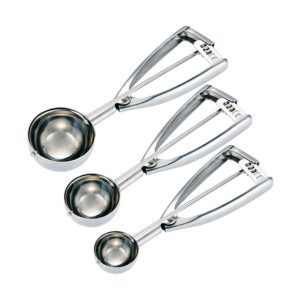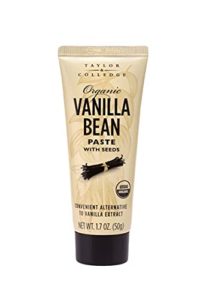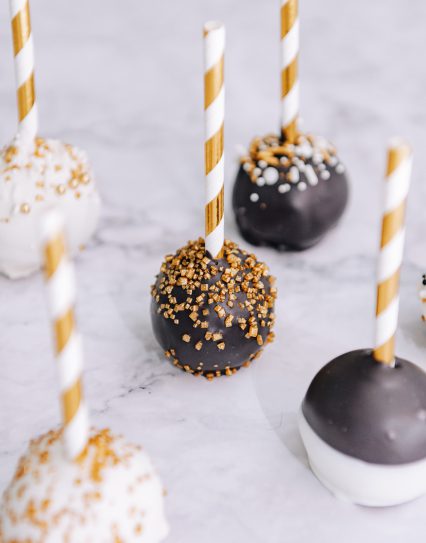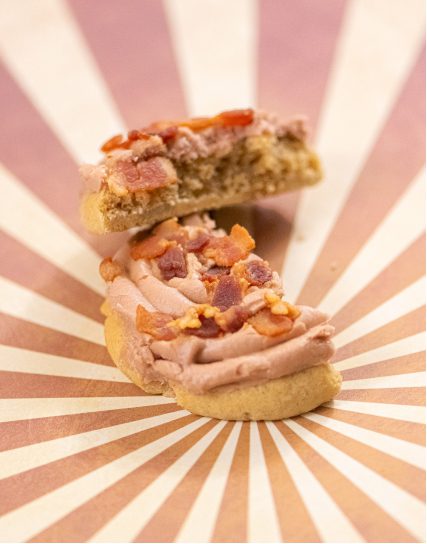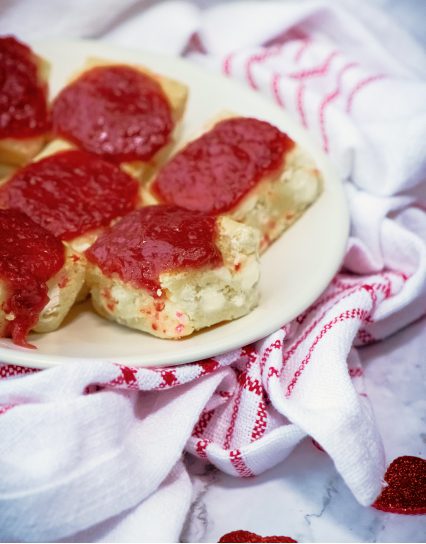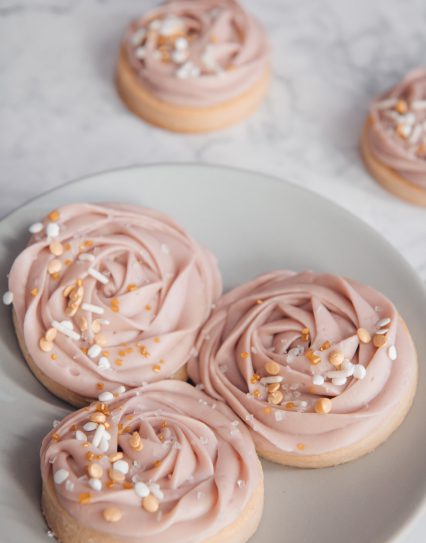
Get my latest posts and recipes in your inbox!
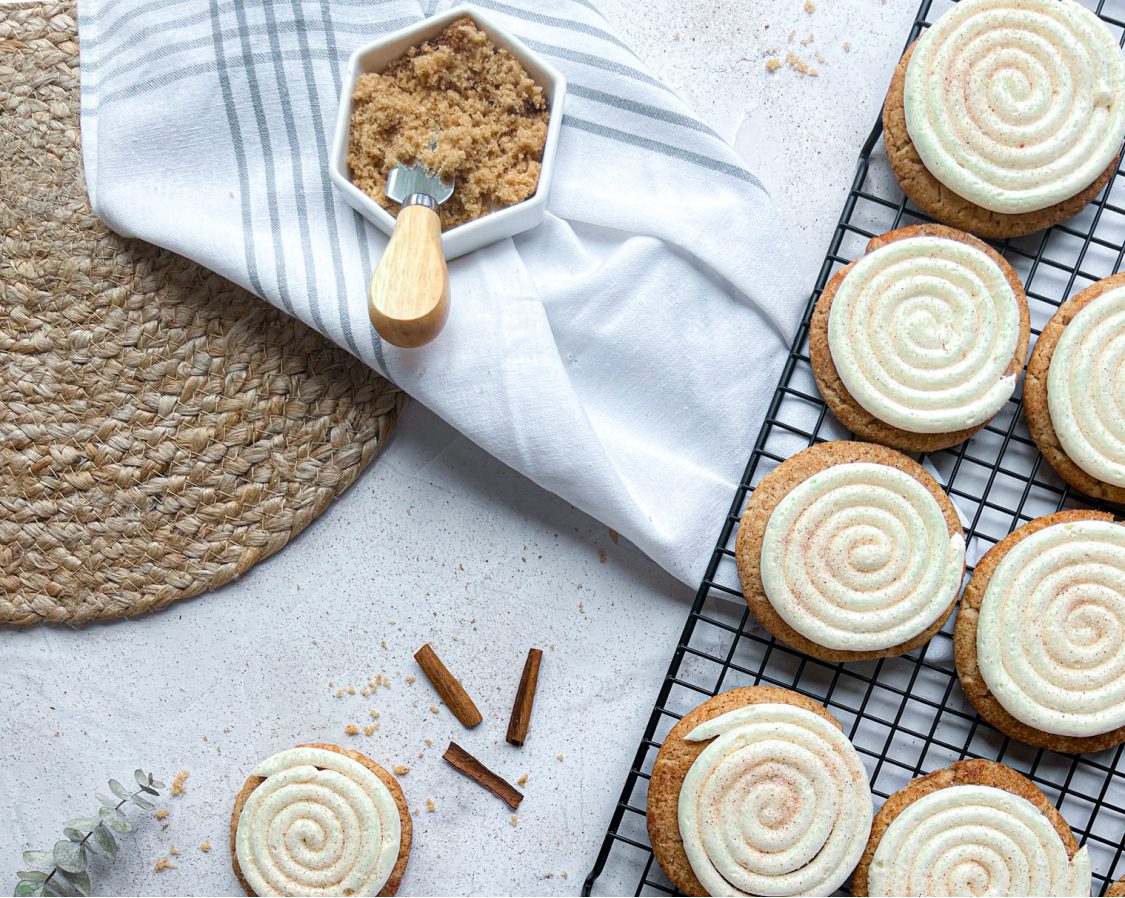





The Best Soft Snickerdoodle Frosted Cake Cookies
Cookie meets cake. The softest and most cake-like snickerdoodle cookies with a rich cream cheese frosting will be sure to become a household go-to.
If you’re a fan of soft cookies, also try these pumpkin cake cookies with cream cheese frosting.
It’s hard to think of Christmas cookie season and not have the snickerdoodle cookie included in the first few you think of. This one stems from traditional recipe of flower, sugar, salt, butter, eggs, and cinnamon…but we are about to take it to the next level. Not only will your kitchen smell like a Bath and Body Works store just before Christmas, but it’s likely you’ll be asked to bring them to every event. I won’t lie, this is somewhat of a classic mash-up, but it’s one worth trying.
Where do these classic gems originate? My first guess was, “with a name like that, they’ve got to be from Germany…or designed by a man who was snickering while doodling.” I was 50% on point. Like many great recipes, there’s several origin stories in circulation. According to The Joy of Cooking, they are indeed PROBABLY of German origin—heavy on the probably. The most widely believed one of German origin is from the word Schneckennudel, which literally translates to “snail noodle.” Ok, so that wasn’t the expected find. If this tale holds true, it is likely that the original creation looked more like a cinnamon roll, hence the snail part. Snickerdoodles may also be a spin-off of the German Snipdoodle coffee cake that was dusted with cinnamon sugar. It’s also very possible that the other origin story from 19th century New England is true, that the New Englanders had a deep love for whimsical names and this name just stuck. Regardless of the origin, these Snickerdoodle Frosted Cake Cookies will pay homage to all of the above.
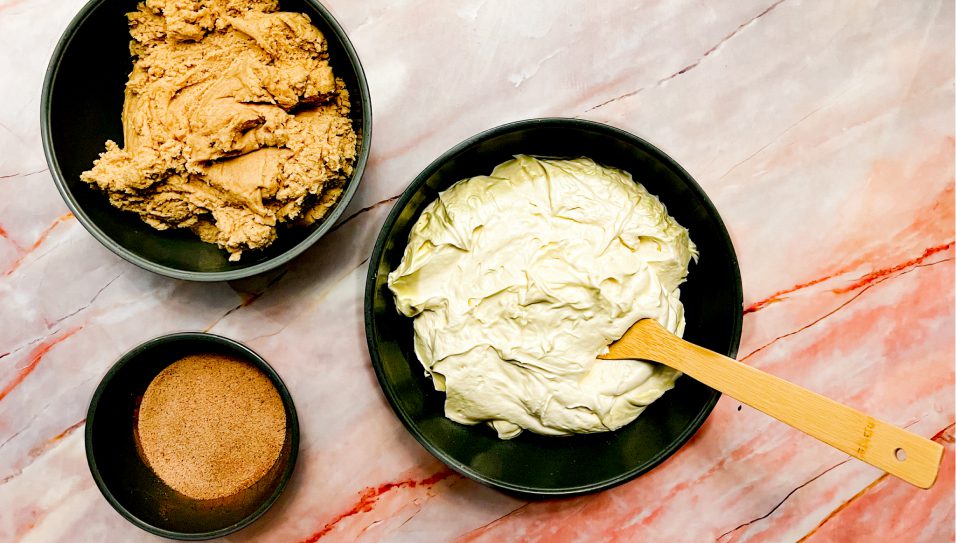

Table of Contents
Why you’ll love these Soft Snickerdoodle Frosted Cake Cookies
• They have a lighter texture than a traditional Snickerdoodle recipe and are the perfect cookie cake hybrid
• They are versatile for any season! The cream cheese frosting can even be colored so they are perfect for Valentine’s Day or St. Patrick’s Day
Ingredients for Soft Snickerdoodle Frosted Cake Cookies
The dry ingredients:
• Flour– a structural component of the cookies. I used regular all-purpose flour. You can use bleached or unbleached.
• Cream of tartar, baking soda and baking powder– the power triad. Cream of tartar is a classic staple of the snickerdoodle that adds a hint of tart and complements the baking soda and baking powder to aid in the leavening and make these little gems so cakey. The cream of tartar also gives these cookies their soft chewy cakiness by preventing the brown sugar and granulated sugar from crystalizing and becoming crunchy. By itself, cream of tartar has no leavening capacity, but when added to baking soda, magic happens.
• Cornstarch
• Cinnamon
• Salt
The wet ingredients:
• Butter– I use salted butter for this recipe. However, I’ve made this recipe with unsalted butter as well and there has been no difference in taste.
• Brown sugar
• Granulated sugar
• Eggs at room temperature
• Vanilla bean paste – I recently just became a fan of paste versus extract for many of my baking concoctions. Many times this is only a personal preference. Besides the sprinkled flecks of vanilla bean that add a visual spark, the flavor is mildly more intense which blends in well for this recipe. If you don’t have vanilla bean paste, vanilla extract will be totally fine as a substitute.
Sprinkle ingredients:
• Granulated sugar
• Cinnamon
Frosting ingredients:
• Cream cheese at room temperature
• softened butter
• vanilla extract
• powdered sugar
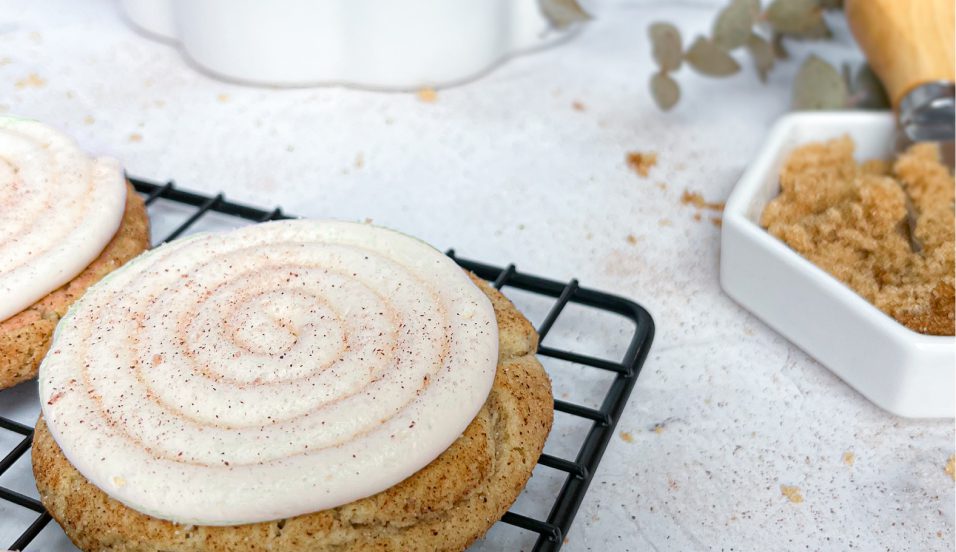

SHOP THIS RECIPE
How to make Soft Snickerdoodle Frosted Cake Cookies
- Line baking sheets with parchment paper. Preheat your oven to 350F.
- In a mixing bowl, using a hand mixer or stand mixer, cream the butter, brown sugar, and granulated sugar just until light, fluffy, and aerated. This should be the 3-minute mark. Creaming the butter, brown sugar, and granulated sugar introduces little air pockets into the cookie dough and supports the cake-like nature of these cookies. Add eggs one by one, then add vanilla. Mix on medium until the consistency is smooth and uniform.
- In a separate mixing bowl, add flour, cream of tartar, cornstarch, baking soda, baking powder, cinnamon, and salt. Whisk until mixed.
- Add dry ingredients to wet ingredients and mix on low with a hand mixer or stand mixer just until the dry ingredients are incorporated. It’s important not to overmix these cookies. Overmixing your cookie dough will result in overdeveloping the gluten and will result in overly gummy cookies.
- Refrigerate the dough for 30 minutes before rolling out the cookies. This will make them easier to form into balls.
- Form 1-inch cookie balls with the palms of your hands (or a medium cookie dough scoop) and roll them in your cinnamon & sugar mixture making sure to coat the entire ball. With the palm of your hand, gently flatten the cookie dough balls until they are approximately twice the area of your cookie dough ball.
- Bake in preheated oven for 10 minutes and let cool on the baking rack completely before frosting them
Recipe FAQs
Recipes like snickerdoodles have a slight characteristic tang to them. These recipes, along with ones like buttermilk pancakes will use both baking powder and baking soda to maintain the slightly tangy flavor in the right ratio while keeping the height of these cookies.
Creaming the butter and sugars introduces air into the cookie dough. Mixing, beating, and stirring all work to combine ingredients but creaming works to aerate. Think of it as the 4th leavening ingredient to this recipe.
Kitchen Pearls
• The key to frosting swirling success it to not hold the tip of the frosting bag too close to the cookie, it will magnify all your movements. Keep about 1.5-2 inches of distance between the tip of the frosting bag and the cookie for the easier and more fluid maneuvering.
• I refrigerate my cream cheese frosting for 1 hour before frosting the cookies. When you’re piping the swirl design, the firmer consistently will keep a crisp swirl design.
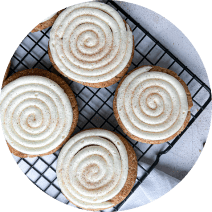

Soft Snickerdoodle Frosted Cake Cookies
If you love this recipe as much as we do, let us know with a 5-star rating!
Ingredients
Cookie Dough
- 3 sticks sticks salted butter, at room temperature
- 1.5 cups granulated sugar
- 6 tablespoons brown sugar
- 3 eggs, at room temperature
- 3 teaspoon vanilla
- 4.5 cups all purpose flour
- 6 tablespoon conrstarch
- 0.75 teaspoon cream of tartar
- 1.5 teaspoon baking powder
- 0.75 teaspoon baking soda
- 2 teaspoons cinnamon
- 0.75 teaspoon salt
Cinnamon Sugar Sprinkle
- 10 tablespoons granulated sugar
- 4 teaspoons cinnamon
Cream Cheese Frosting
- 12 tablespoons salted butter
- 2 teaspoons vanilla
- 4.5-5 cups powdered sugar
Instructions
Cookie Dough
- Line baking sheets with parchment paper. Preheat your oven to 350F.
- In a bowl, using a hand mixer or stand mixer, cream the butter, brown sugar, and granulated sugar just until fluffy. This should be the 3 minute mark. Add eggs one by one, then add vanilla. Mix on medium until consistency is smooth and uniform.
- In a separate bowl, add flour, cream of tartar, corn starch, baking soda, baking powder, cinnamon and salt. Whisk untl mixed.
- Refigerated dough for 30 minutes.
- Form 1 inch cookie balls and roll then in you cinnamon & sugar mixtures. With the palm of your hand, gently flatten the cookie dough balls until they are approximately twice the area of your cookie dough ball.
- Bake in preheated oven for 10 minutes and let cool on baking rack.
Cream cheese frosting
- Cream the room temperature butter, room temperature cream cheese vanilla, and powdered sugar on medium for 4 minutes. If you find that your frosting is too thin, you can add ½ cup of additional powdered sugar.
- Transfer your cream cheese frosting into a piping bag or ziplock bag and get to work! Add an leftover cinnamon sugar sprinkle over your swirl frosted cookies.
- posted by Casey Kolp
- on
- No Comments


About the Author
Casey Kolp
Cheers! I’m Casey! Get ready for a blog full of wanderlust, culinary adventures, and unfiltered opinions – where I spill the tea (and the wine) on all things food, lifestyle, and travel!
